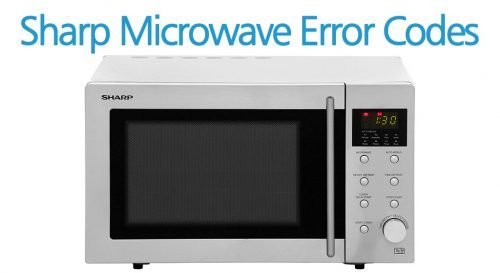
Now, you might be wondering why your trusty kitchen appliance is suddenly acting up. The SE error is a common issue that many Sharp microwave owners encounter. Essentially, it means that the microwave is sensing an error in its keypad, which could be due to various reasons like moisture, dirt, or even a simple software glitch. Think of it as a temporary misunderstanding between your microwave’s ‘brain’ and its ‘fingertips’. The good news is, with a bit of patience and some basic troubleshooting steps, you can often resolve this issue without calling in professional help.
Understanding Error Code SE
Let’s dive a little deeper into the mechanics of what Error Code SE truly means. In the realm of microwaves, the SE code is akin to a red flag on a racing track, signaling that something isn’t working quite right with the touchpad circuitry. Imagine your microwave as a little computer—just like any tech device, it has a system that needs inputs to function correctly. When you press a button to start cooking, you’re essentially giving it a command. If the microwave doesn’t understand the command because of a fault, it will display the SE error.
This issue generally arises from a few different sources. The most common culprit is something called a ‘stuck button’—a button that gets stuck in a pressed position due to dirt or moisture, making your microwave think you’re holding it down indefinitely. Other times, the error could be due to a malfunctioning control board or a short circuit in the microwave’s wiring. A control board is like the microwave’s motherboard, processing all the commands and ensuring everything runs smoothly. When it fails, the whole system can go a bit haywire.
The important thing to remember here is that while the error might seem daunting, it’s usually manageable. It’s vital to address the SE error as soon as possible to avoid potential safety hazards or further complications. Ignoring the issue could not only affect the microwave’s performance but also potentially lead to a complete shutdown.
Troubleshooting the SE Error
Alright, here’s the deal—while seeing an error code can feel overwhelming, tackling it isn’t as scary as it sounds. The first step in resolving the SE error is simply rebooting your microwave. Just like rebooting a computer, turning your microwave off and unplugging it from the power source for a few minutes can sometimes clear any temporary glitches. Think of it as giving your microwave a short nap to reset its systems.
If rebooting doesn’t do the trick, it’s time to roll up your sleeves for some cleaning. Unplug the microwave and gently clean the touchpad with a soft cloth slightly dampened with water. Avoid using harsh chemicals, as they’re like kryptonite to touchpad surfaces. With any luck, a clean slate will help the microwave recognize commands correctly again.
However, if cleaning and rebooting don’t resolve the issue, you might need to inspect the control board. This step is a bit more technical and might be akin to investigating the wiring in your car’s dashboard. If you’re not comfortable doing this, it might be a good idea to contact Sharp’s customer service or a professional technician. They can help diagnose and fix deeper issues safely.
Preventing Future Errors
Once you’ve tackled the SE error, the next stage is ensuring it doesn’t come back like an unwanted party guest. Preventing these errors starts with proper maintenance of your microwave. Make it a habit to clean the touchpad regularly, as dirt and moisture are the usual suspects behind stuck buttons. Also, try to keep the area around your microwave dry to prevent moisture-related issues.
Moreover, consider the environment where your microwave lives. If it’s too close to a heat source or in a humid spot, it may contribute to recurring issues. Think of it as finding the perfect balance for a small ecosystem—everything needs to be just right for optimal performance.
If errors persist even after regular maintenance, it might be worth having a professional look at your microwave on occasion. A periodic check-up can catch small problems before they snowball into major headaches. Having a microwave that operates smoothly not only saves you time and frustration but also prolongs the life of the appliance. After all, a well-cared-for microwave can be a trusty kitchen sidekick for years to come.